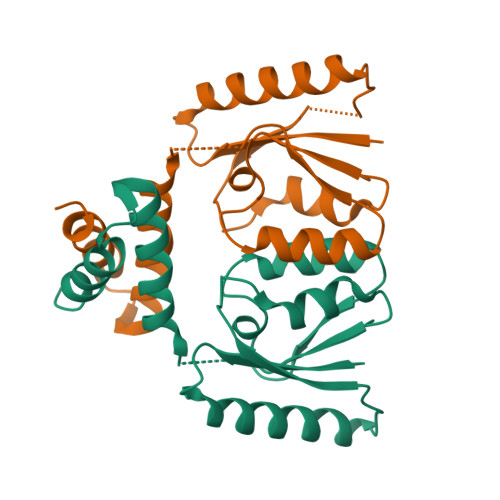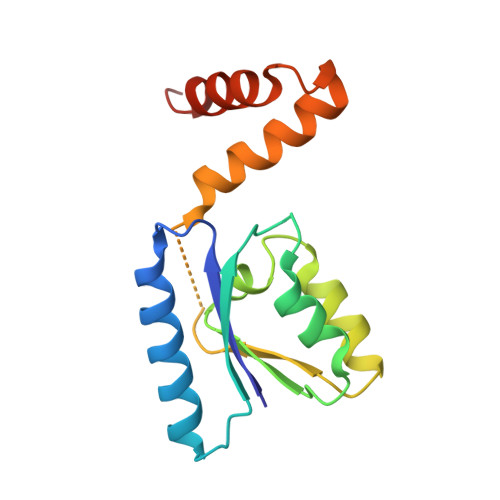Multiple serine transposase dimers assemble the transposon-end synaptic complex during IS607-family transposition.
Chen, W., Mandali, S., Hancock, S.P., Kumar, P., Collazo, M., Cascio, D., Johnson, R.C.(2018) Elife 7
- PubMed: 30289389
- DOI: https://doi.org/10.7554/eLife.39611
- Primary Citation of Related Structures:
6DGB, 6DGC - PubMed Abstract:
IS 607 -family transposons are unusual because they do not have terminal inverted repeats or generate target site duplications. They encode two protein-coding genes, but only tnpA is required for transposition. Our X-ray structures confirm that TnpA is a member of the serine recombinase (SR) family, but the chemically-inactive quaternary structure of the dimer, along with the N-terminal location of the DNA binding domain, are different from other SRs. TnpA dimers from IS 1535 cooperatively associate with multiple subterminal repeats, which together with additional nonspecific binding, form a nucleoprotein filament on one transposon end that efficiently captures a second unbound end to generate the paired-end complex (PEC). Formation of the PEC does not require a change in the dimeric structure of the catalytic domain, but remodeling of the C-terminal α-helical region is involved. We posit that the PEC recruits a chemically-active conformer of TnpA to the transposon end to initiate DNA chemistry.
Organizational Affiliation:
Department of Biological Chemistry, David Geffen School of Medicine, University of California at Los Angeles, Los Angeles, United States.
















